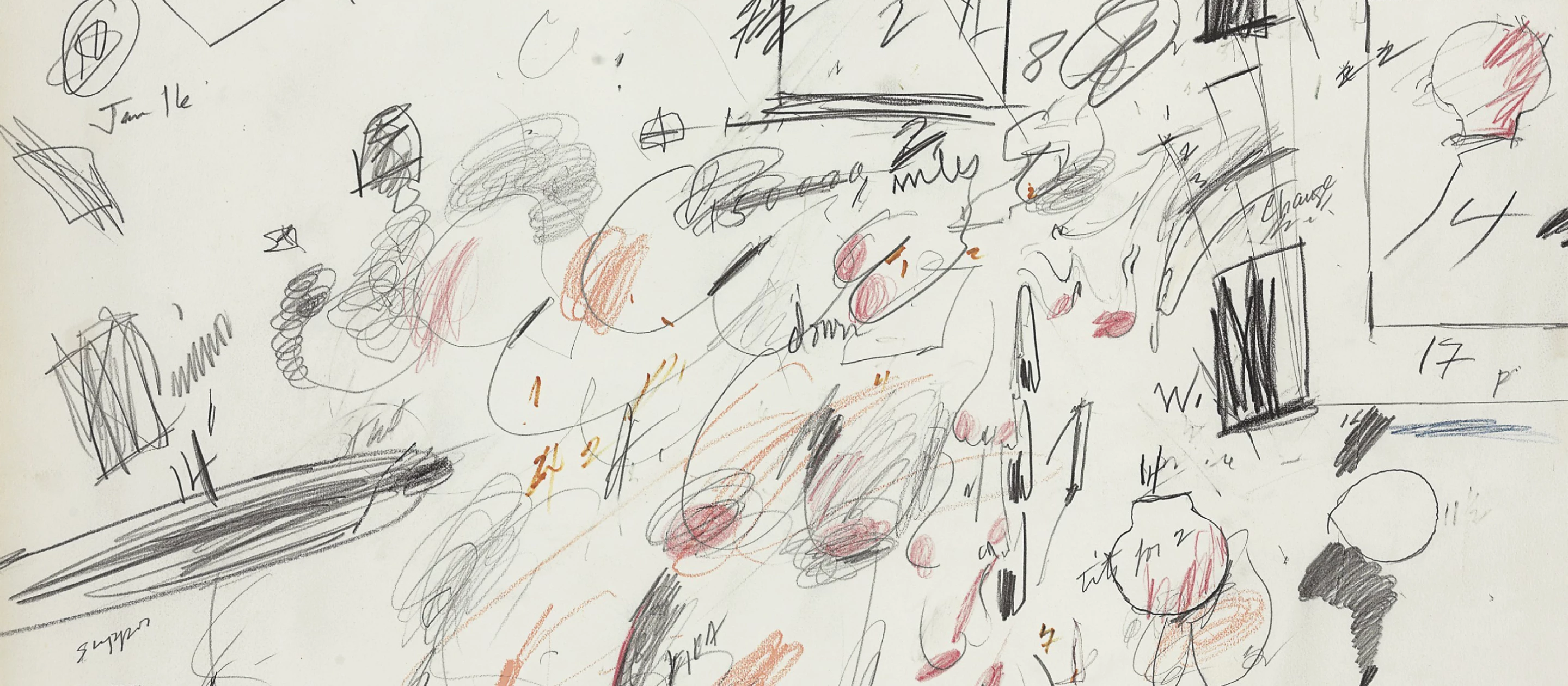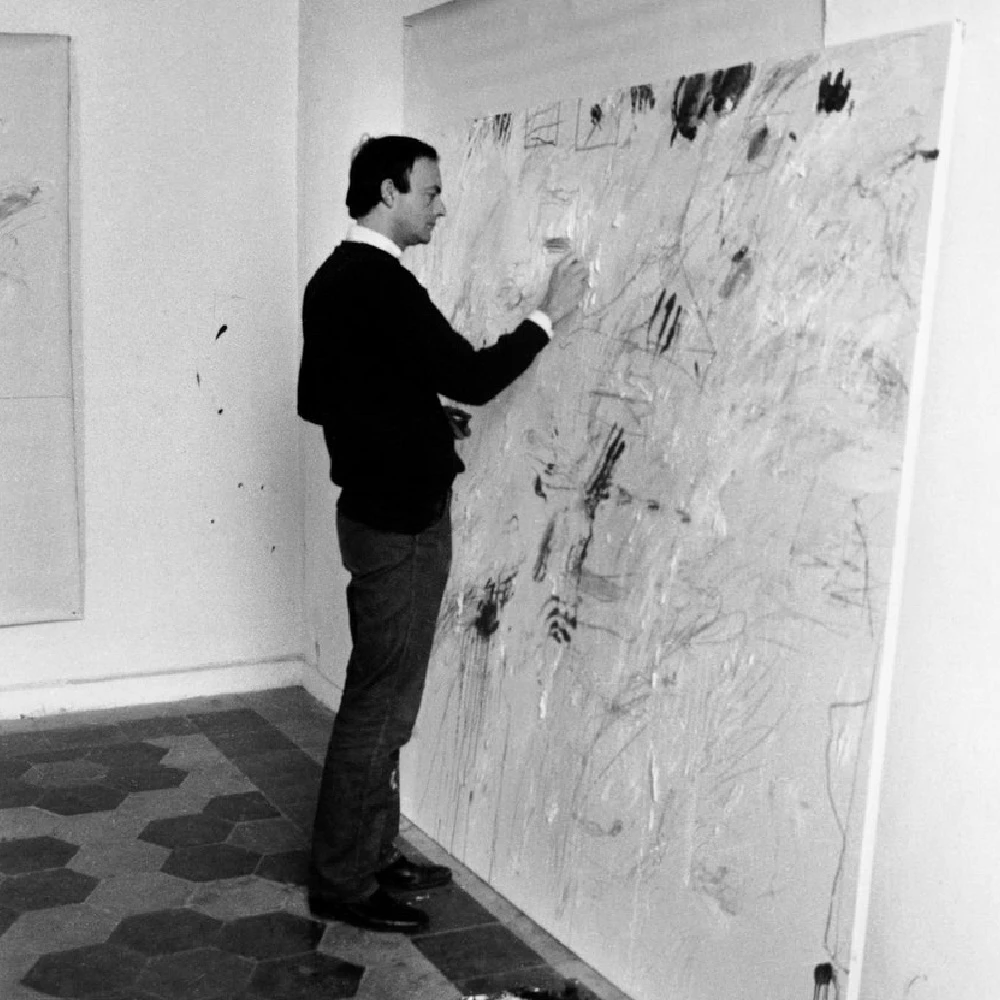Cy Twombly was born in Lexington, Virginia (USA) on 25 April 1928. Between 1948 and 1951 he attended the School of the Museum of Fine Arts in Boston, Washington and Lee University in Lexington, and the Art Students League in New York, where he met Robert Rauschenberg. At the latter's suggestion, he began studying at Black Mountain College in North Carolina in 1951-52. Among his teachers were Franz Kline, Robert Motherwell and Ben Shahn. Also in 1951, the Kootz Gallery in New York dedicated his first solo exhibition to him. His work was influenced by the black and white expressionism of Kline and the playful imagery of Paul Klee.
In 1952, Twombly obtained a scolarship from the Virginia Museum of Fine Arts and traveled to North Africa, Spain, France and Italy. Upon his return in 1953, he joined the army as a cryptographer. Between 1955 and 1959 he worked in New York and Italy, finally settling in Rome. Here he began to work on large-scale works, moving away from the expressionist style, adopting real letters and numbers, and drawing inspiration from poetry, mythology and classical tradition. He thus came to create his own vocabulary of metaphorical signs, free from traditional iconography.
In 1964, he participated in the Venice Biennale. In 1968, the Milwaukee Art Center presented his first retrospective. Others followed, such as those organised by the Kunsthaus Zürich in 1987, the Musée National d'Art Moderne in Paris in 1988, the Museum of Modern Art in New York in 1994, the Pinakothek der Moderne in Munich in 2006, the Tate Modern in London in 2008, and the Art Institute of Chicago in 2009. In 1995, the Cy Twombly Gallery opened in Houston to exhibit the works created since 1954. The artist died in Rome on 5 July 2011.

